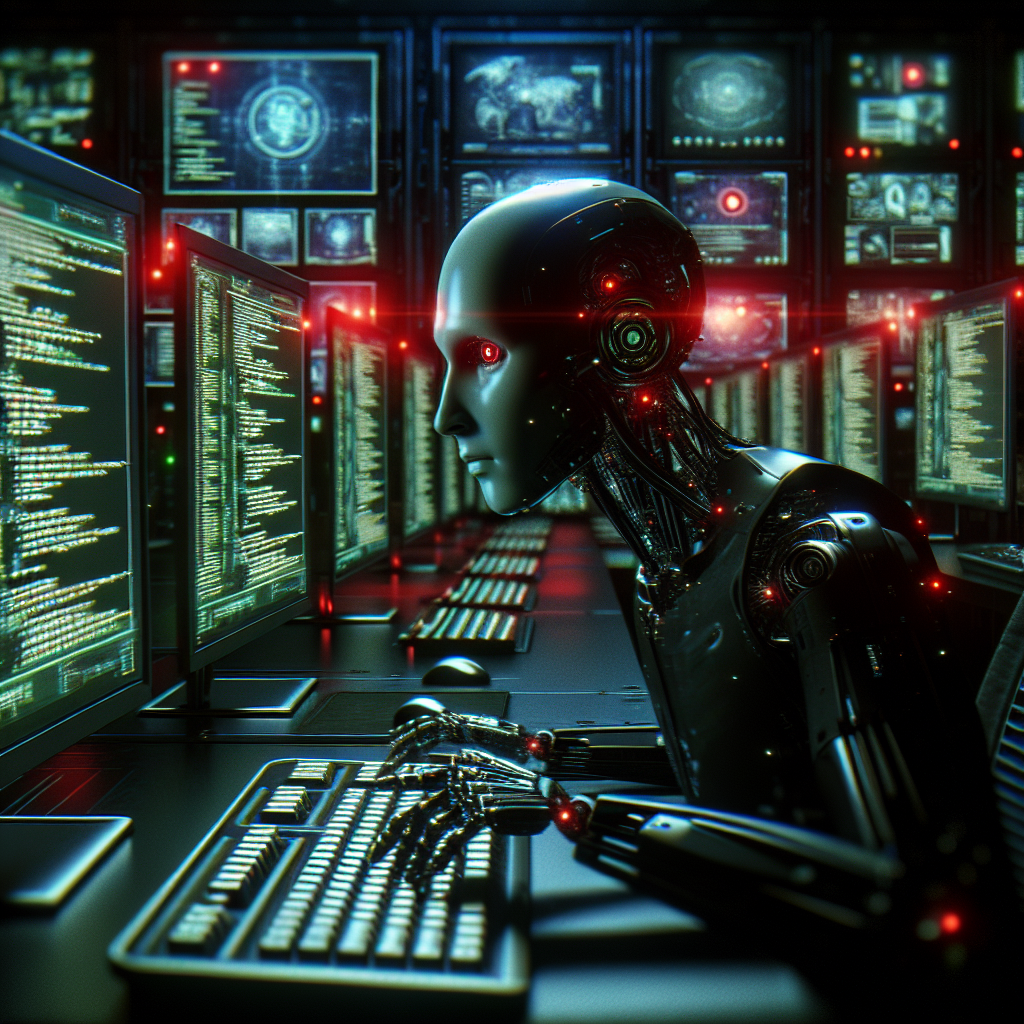Cyberattacks by AI Agents Are Coming
The rise of Artificial Intelligence (AI) has revolutionized various sectors, from healthcare to finance, providing enhanced efficiencies and insights. However, as technology continues to advance, so does the potential for darker applications, particularly in the realm of cybersecurity. Recent discussions highlighted in MIT Technology Review have brought attention to the looming threat of cyberattacks executed by AI agents. This blog post delves into the implications of such developments, offering insights into how AI could alter the landscape of cyber warfare and digital security.
The Evolution of Cyber Threats
Cybersecurity has constantly evolved, adapting to new technologies and tactics employed by malicious actors. To understand the potential impact of AI-driven cyberattacks, it is essential to review the evolution of cyber threats over time.
From Simple Hacks to Complex Attacks
Initially, cyber threats were often executed by individuals using basic scripts and tools. As technology advanced, so did the sophistication of these threats.
– Malware and Ransomware: The introduction of malware and ransomware marked a significant shift, allowing attackers to exploit vulnerabilities in software systems and demand ransoms for data release.
– Phishing Attacks: Phishing became prevalent, leveraging social engineering to deceive individuals into revealing sensitive information.
– Advanced Persistent Threats (APTs): State-sponsored actors and organized cybercriminals began employing APTs, which are prolonged and targeted cyberattacks, often designed for espionage.
As the landscape shifted, so too did the methods and motivations behind cyberattacks. The introduction of AI into this equation presents a new set of challenges.
How AI is Changing Cybersecurity
AI technology is not inherently dangerous; it is the application and intent behind its use that can lead to issues. AI has been harnessed to improve cybersecurity measures, but it also opens the door for attackers to exploit its capabilities.
AI in Defense
Organizations have begun to implement AI-driven security measures to combat cyber threats. These include:
– Threat Detection: Machine learning algorithms can analyze vast datasets to identify anomalies, flagging potential threats faster than traditional methods.
– Automated Responses: AI systems can respond to threats in real-time, isolating affected systems and mitigating damage.
– User Behavior Analytics: AI can monitor user behavior patterns, helping to detect insider threats and compromised accounts.
While these advancements significantly enhance security measures, they also highlight vulnerabilities that attackers could exploit.
AI in Offense
The offensive capabilities of AI are equally concerning. Cybercriminals and malicious actors can leverage AI technology to execute more sophisticated attacks. Potential applications include:
– Automated Phishing: AI can generate personalized phishing emails, making them harder to detect and increasing the likelihood of successful attacks.
– Vulnerability Scanning: AI systems can rapidly scan and identify vulnerabilities in software, enabling attackers to exploit them before organizations can patch their systems.
– Deepfake Technology: Deepfake AI can create realistic audio and video impersonations, potentially leading to fraud and misinformation.
These advancements signify a shift toward a new kind of cyber warfare, where the line between offense and defense becomes increasingly blurred.
The Implications of AI-Driven Cyberattacks
As the possibility of AI-driven cyberattacks looms on the horizon, organizations, governments, and individuals must consider the broader implications of this emerging threat.
Legal and Ethical Considerations
The use of AI in cyberattacks raises serious legal and ethical questions:
– Accountability: Determining responsibility for AI-driven attacks is complex. If an AI system autonomously executes an attack, who is liable?
– Regulation: Existing laws may not sufficiently address the challenges posed by AI in cybersecurity. New regulations may need to be developed to mitigate these threats.
– Privacy Concerns: The use of AI in surveillance and monitoring can infringe on individual privacy rights, leading to ethical dilemmas regarding data usage.
Preparedness and Response
Organizations must adapt their cybersecurity strategies to account for the potential of AI-driven attacks. Key strategies include:
– Investing in AI Security Solutions: Organizations should consider implementing AI-based security tools to enhance their defenses.
– Regular Training: Regular training and awareness programs can help employees recognize and respond to AI-enhanced threats.
– Collaborative Defense: Sharing intelligence within industries can strengthen defenses against emerging threats.
The Future of Cybersecurity with AI
The integration of AI into cybersecurity will profoundly impact the future landscape of cyber threats and defenses. As both defenders and attackers leverage AI, a continuous arms race is expected.
Continuous Evolution
As AI technology evolves, so will the strategies employed by both attackers and defenders. Organizations must prioritize staying informed about the latest trends and advancements in AI to stay ahead of potential threats.
– Research and Development: Investing in research to understand the implications of AI in cybersecurity will be crucial for developing effective defensive strategies.
– Collaborative Efforts: Collaboration between private and public sectors will be essential in developing comprehensive approaches to counter AI-driven threats.
Conclusion
The rise of AI agents in the realm of cybersecurity presents both opportunities and challenges. While AI can significantly enhance defenses, it also enables malicious actors to execute unprecedented cyberattacks. As we advance into this new frontier, it is imperative for organizations, governments, and individuals to remain vigilant and proactive in their cybersecurity efforts. By understanding the potential threats and investing in robust security measures, we can help safeguard our digital landscape against the rising tide of AI-driven cyberattacks.
As the cybersecurity landscape continues to evolve, embracing innovation and collaboration will be the key to effectively navigating the challenges posed by AI in the digital age.



